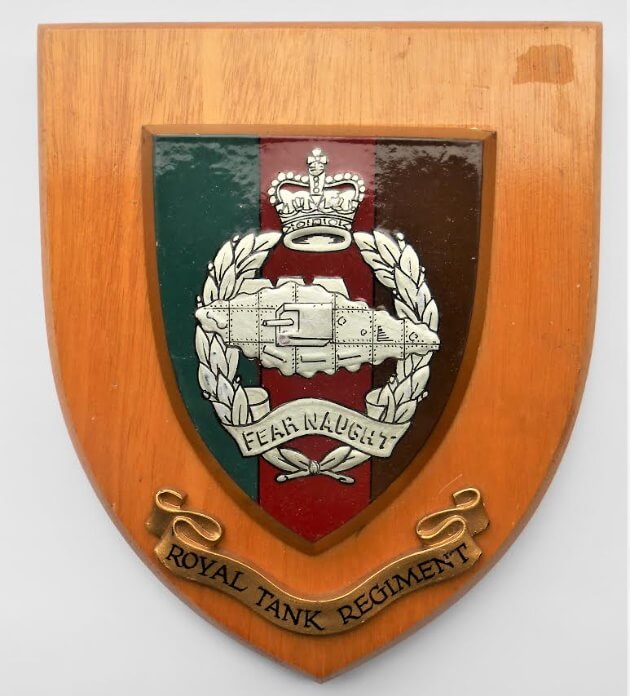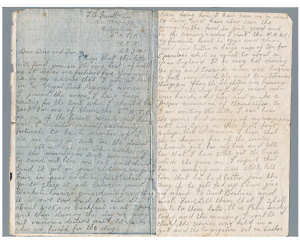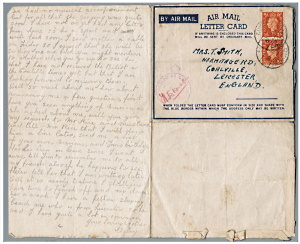On 29 March 1941, nineteen year old Trooper Thomas Aubrey Garrett, known as Aubrey, wrote a letter to relatives living back home in Coalville, Leicestershire.
He politely asked after their health, then tells them his big news, which is that he has finally managed to get into the Royal Tank Regiment, something he has wanted to do for some time.
The regiment is fighting in the North African desert at the time, and he describes how all the men are living in tents, surrounded by sand. The sand, he says, not only gets into your food and clothing but "when you go to sleep it gets between your blankets".
He politely asked after their health, then tells them his big news, which is that he has finally managed to get into the Royal Tank Regiment, something he has wanted to do for some time.
The regiment is fighting in the North African desert at the time, and he describes how all the men are living in tents, surrounded by sand. The sand, he says, not only gets into your food and clothing but "when you go to sleep it gets between your blankets".
During the day, it gets very hot and there are flies everywhere.
Happily, the NAFFI food is good, he tells them, and you can get eggs and chips, bread and butter and a large cup of tea for 5 piastres, which is the local Egyptian currency, the equivalent of one shilling or 5p in modern British coins.
He also tells them that he has had a trip to Cairo and has seen the pyramids.
Happily, the NAFFI food is good, he tells them, and you can get eggs and chips, bread and butter and a large cup of tea for 5 piastres, which is the local Egyptian currency, the equivalent of one shilling or 5p in modern British coins.
He also tells them that he has had a trip to Cairo and has seen the pyramids.
Tanks and the Royal Tank Regiment
A tank is an armoured vehicle with a large-calibre gun mounted on a gun turret, and often other auxiliary weapons. It is intended for frontline battlefield use, and employs a continuous track, instead of wheels, to give it improved manoeuvrability in difficult terrain.
They were first introduced during World War One and, according to an account widely repeated, in order to disguise their initial development for security reasons, they were deliberately misdescribed as "watercarriers for Mesopotamia", or "tanks".
Initially, tanks were deployed by companies of the Machine Gun Corps. These companies were then reconstituted as companies of the newly created Tank Corps. In 1918 they became Battalions, and in 1923, the Tank Corps became the Royal Tank Corps.
Following various reorganisations, in 1939 the 6th Battalion of the Royal Tank Corps became the 6th Royal Tank Regiment.
At the start of World War Two, the 6th Royal Tank Regiment was stationed in Egypt and went on to play a significant role in the Desert War against Rommel's Afrika Korps.

A tank is an armoured vehicle with a large-calibre gun mounted on a gun turret, and often other auxiliary weapons. It is intended for frontline battlefield use, and employs a continuous track, instead of wheels, to give it improved manoeuvrability in difficult terrain.
They were first introduced during World War One and, according to an account widely repeated, in order to disguise their initial development for security reasons, they were deliberately misdescribed as "watercarriers for Mesopotamia", or "tanks".
Initially, tanks were deployed by companies of the Machine Gun Corps. These companies were then reconstituted as companies of the newly created Tank Corps. In 1918 they became Battalions, and in 1923, the Tank Corps became the Royal Tank Corps.
Following various reorganisations, in 1939 the 6th Battalion of the Royal Tank Corps became the 6th Royal Tank Regiment.
At the start of World War Two, the 6th Royal Tank Regiment was stationed in Egypt and went on to play a significant role in the Desert War against Rommel's Afrika Korps.

Crusader II tank - Photo: Public Domain via wikipedia
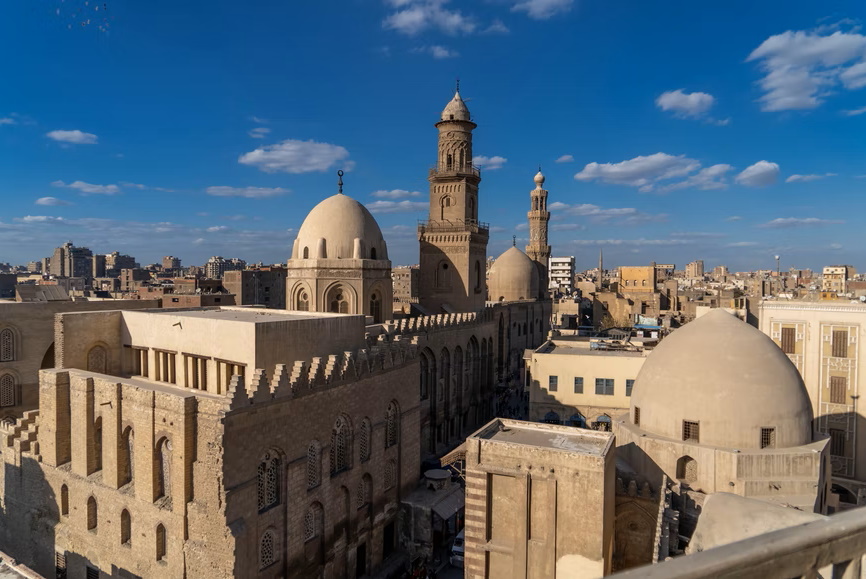
(Above) Old Cairo - Photo: Ashraf Abdelalim via Unsplash License
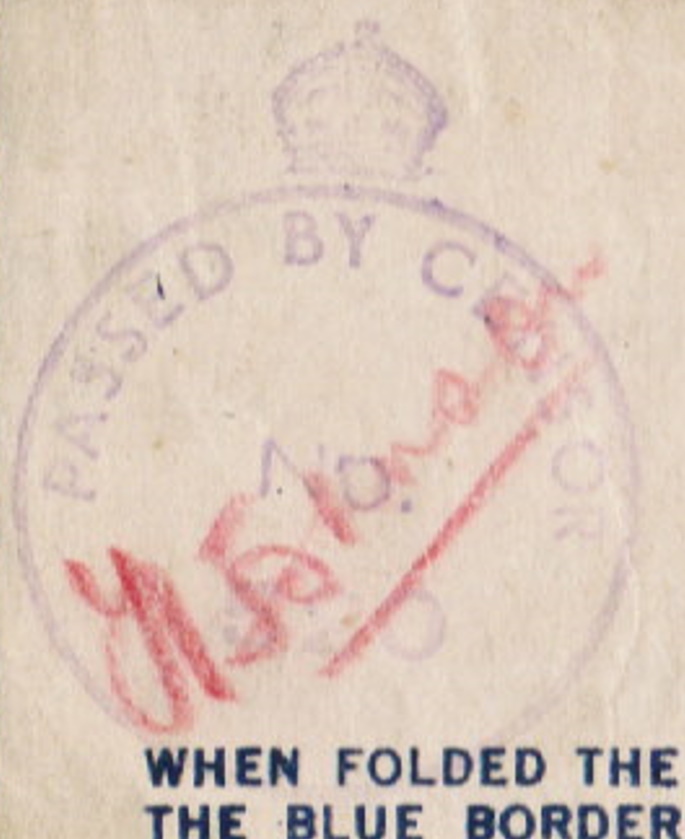 Each letter sent by a military serviceman was required to be read by a censor for security purposes, to ensure that it did not include information likely to be of use to an enemy.
Each letter sent by a military serviceman was required to be read by a censor for security purposes, to ensure that it did not include information likely to be of use to an enemy.The designated censor stamped Aubrey's letter (left) and signed over the rubber stamp.

The return address makes no mention of his geographical location, and the letter will have been posted through the official military postal service, using British stamps. However, it is possible to make out the word EGYPT where the postage stamps have been franked.
Pass the cursor over the stamps, left, to see the word EGYPT highlighted in green.
This letter is one of four written by Trp T A Garrett that are now in the Carillon Museum collection, listed in the catalogue together as item LOUWM:2018.41. The last letter, dated 10 July 1944, was sent from France soon after the D-Day landings in June that year. But, sadly, he was destined to die in France on 18 July 1944, aged twenty-two, and is buried there in the Ranville War Cemetery in Normandy.

